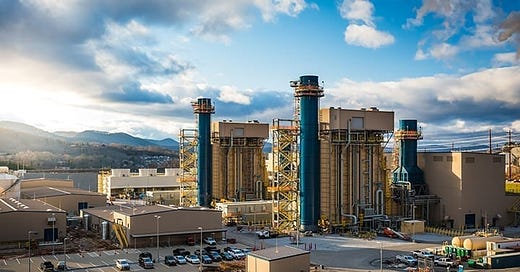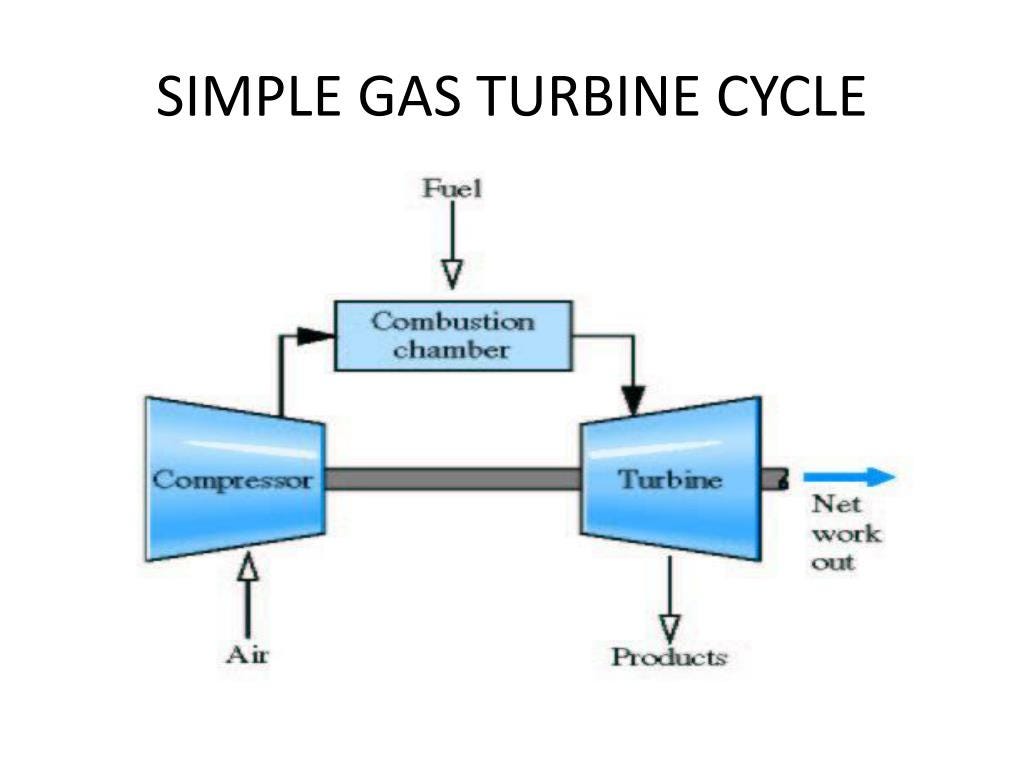The wonders of CCGT
Combined-Cycle Gas Turbines: the radical energy innovation that you have never heard of.
Make someone’s day: Gift a subscription to your friends and family!
Combined Cycle Natural Gas (CCGT) plants are an almost-secret weapon to radically reduce carbon emissions without undermining economic growth. So why have most people never heard of them?
See also my other posts on Energy:
Most of the following is an excerpt from my second book Promoting Progress: A Radical New Agenda to Create Abundance for All. You can order e-books at a discounted price at my website, or you can purchase full-price ebooks, paperback, or hardcovers on Amazon.
Other books in my “From Poverty to Progress” book series:
As I have argued in a previous article, we need to promote long-term economic growth and protect the natural environment by accellerating the Third Energy Transition. The cornerstone of the Third Energy Transition is natural gas. While a few nations have abundant hydroelectric resources or a robust electrical grid powered by nuclear power, most nations do not. Unfortunately, nuclear power is currently too expensive in most countries, and it can only generate electricity, so another energy source is needed.
For the United States in particular, successfully making a Third Energy Transition will require a large increase in natural gas production. For a long time, doing so appeared to be geologically impossible, but the dramatic increase in shale gas estimates has shown that it is not only possible, but it is inevitable if government policy does not stand in the way.
If you are skeptical about natural gas, read my post 16 reasons why Greens should love natural gas.
Combined-Cycle Gas Turbines
Shale gas is a revolutionary new energy source, but another technological innovation makes gas perfect for generating electricity: combined-cycle gas turbines (CCGT). Invented in 1961, the technology has undergone constant improvement since that time. CCGT plants now generate more electricity in the United States than any other source, and their total production capacity is growing fast (EIA 2019).
CCGT plants generate energy via a two-step process. First, gas turbines burn natural gas directly, to generate electricity. Then the heat recovered from this process is used to boil water to create steam. That steam then powers a more traditional steam turbine.
Because they are a two-step process, CCGT plants are extremely fuel efficient and they emit far less carbon per unit of energy. A new CCGT plant emits one-third of the carbon per unit of energy (752.3 pounds per MWH) compared to an existing coal plant (2162.6 per MWH) (Frank).
Better yet, the efficiency of CCGT technology keeps improving. The most recent versions of General Electric H-class CCGT plants convert energy with 64+% efficiency. Even more impressive, H-class plants can start up in less than 30 minutes, so they can modulate with customer demand. This makes CCGT far more useful for generating electricity than coal, nuclear, oil, solar, wind, or biomass.
The combination of cheap shale gas and CCGT plants enabled the United States to rapidly replace aging coal power stations that were at the end of their life cycle with brand-new hyper-efficient power plants. Best of all, doing so actually reduces the cost of electricity. Unfortunately, Green renewable energy mandates and subsidies are sabotaging the complete phase-out of coal in the United States with CCGT.
Renewables Need Natural Gas
Ironically, while Green energy policies hurt very energy-efficient CCGT, they promote less energy-efficient types of electricity production via natural gas.
The second type of natural gas power plant is a conventional power station (sometimes called “simple cycle”). Rather than going through two separate electricity-generating steps, conventional stations only burn natural gas in a gas turbine (basically, a stationary jet engine). Unfortunately, this type of power plant is far less energy-efficient than CCGT: only about 30-40% of the energy in natural gas is converted into electricity.
If it were not for Green energy policies, conventional gas power stations would largely have been phased out in favor of more energy-efficient CCGT plants. Conventional natural gas plants are very important to supplement solar and wind power because they take much less time to warm up and operate at peak efficiency.
This makes simple-cycle gas turbines excellent “peakers.” Peakers generate bursts of electricity for very short periods to even out short-term variations in electricity production and consumption. They are essential for keeping our electrical grid stable. Because natural gas peakers are less efficient than CCGT, they burn more gas, cost much more to run, and emit more carbon per unit of electricity created.
Natural gas peakers play a crucial role in supplementing intermittent solar and wind power. Without natural gas peakers, short-term variations in wind and solar power would constantly collapse the electrical grid. So Green energy policies that force utilities to use solar and wind, unintentionally also force utilities to construct and run less energy-efficient natural gas peakers. This makes no sense from an environmental or economic perspective.
New CCGT can replace gas peakers (almost)
Fortunately, the latest generation CCGT plants can ramp up electrical generation. to match demand. They can typically increase or decrease electrical generation by 20-50 MW per minute. This is far faster than coal or nuclear plants can modulate. And unlike solar and wind, this modulation is by human decision, not natural forces out of our control.
This means that CCGT plants can run 24/7 year-round and modulate electrical generation to match electrical demand. CCGT plants can increase generation in the morning, increase it in the afternoon for the peak electricity demand, and then decrease generation in the nighttime.
Unfortunately, they cannot ramp up electrical demand almost instantly like simple-cycle gas turbines, so they cannot completely replace older technologies. This means that grids likely need at least some simple-cycle gas turbines or utility-scale batteries to function as instantaneous peakers. We can, however, replace most existing simple-cycle gas turbines with far more energy-efficient CCGTs.
Why don’t we? To a large extent, because of government Green energy policies that subsidize and mandate solar and wind and phase out fossil fuels. The more solar and wind power, the greater the need for less energy-efficient simple-cycle gas turbines. And yes, utility-scale batteries are also an option, but they are FAR more expensive.
Two Separate Energy Infrastructures
The need to use natural gas alongside solar and wind means that Green policies require us to build two separate energy infrastructures: solar/wind plus a completely redundant natural gas infrastructure. Since there are times when neither wind nor solar is available, the second natural gas infrastructure must be able to generate as much power as solar and wind combined. Virtually all the cuts to carbon emission from running solar and wind are being made up by running carbon-producing gas peakers. This makes no sense from either an economic or environmental perspective.
This leads to a fact that Green activists cannot seem to grasp. Solar and wind require additional usage of natural gas. That is one of the many reasons why solar and wind can supplement fossil fuels, but they cannot replace them, as is their stated goal. Note that biomass or batteries can also perform this peaking role, but as we will later see, those energy sources are definitely not Green.
A far better option would be to:
eliminate subsidies and mandates for renewable energy sources and
let utilities phase out both coal and natural gas peakers in favor of CCGT.
This would reduce electricity costs and lower carbon emissions and pollution.
Most of the above is an excerpt from my second book Promoting Progress: A Radical New Agenda to Create Abundance for All. You can order e-books at a discounted price at my website, or you can purchase full-price ebooks, paperback, or hardcovers on Amazon.
Other books in my “From Poverty to Progress” book series:
See also my other posts on Energy:













Excellent read and you’re correct, CCG are marvels pieces of equipment.
If one truly wanted to accurately calculate the value of wind and solar, they’d only look at wind and solar as ‘Fuel’ savers. The value of wind and solar is only the value of gas/fuel they save. And as you do correctly pointed out, when you use single cycle engines to back up wind and solar, you don’t save that much gas. So grid wide, wind and solar only have marginal value for all the subsidies we spend on them.
Great piece. Thanks.